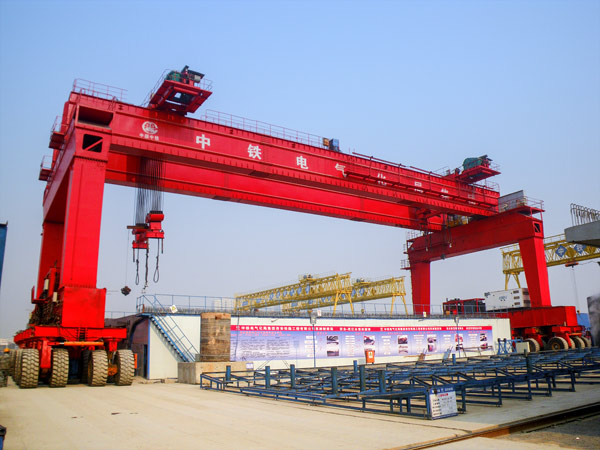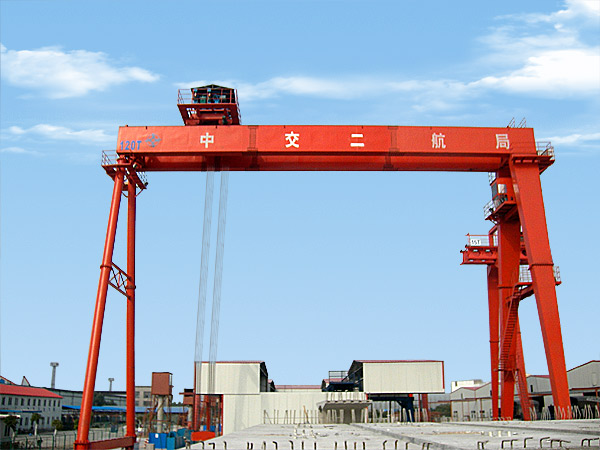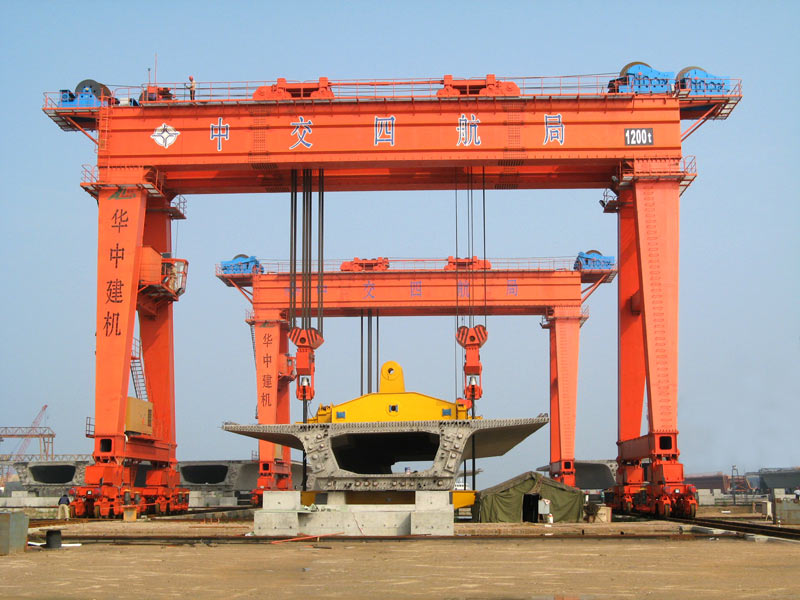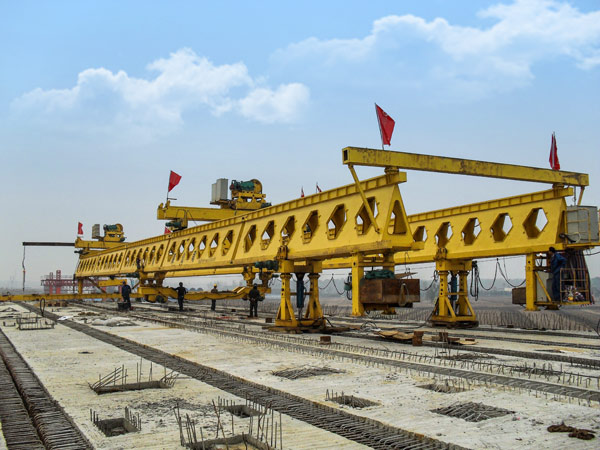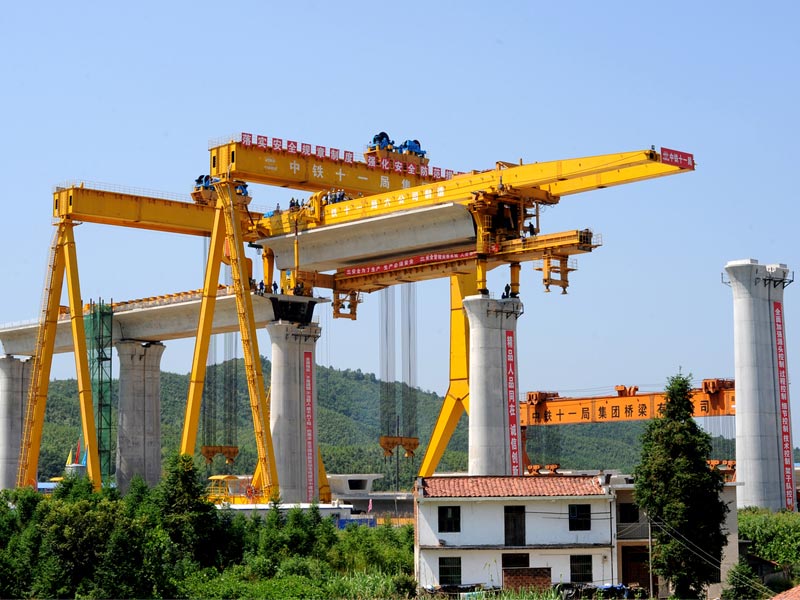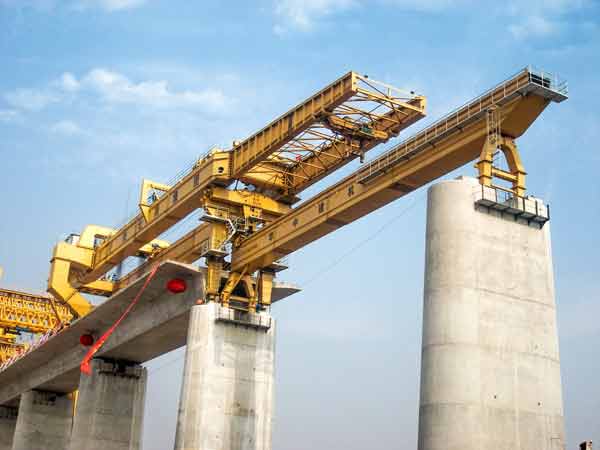Introduction to gantry crane
A bridge crane with a horizontal bridge set on two supporting legs forming a gantry shape. Operating on ground tracks, the crane is used for handling and erailing operations in open storage yards, shipyards, power stations, ports and railway freight depots. The lifting mechanism, trolley running mechanism and bridge structure of gantry crane are basically the same as that of bridge crane. Due to the large span, most crane operating institutions are driven separately to prevent the crane from skew operation and increase resistance, or even accidents. Gantry crane crane crane crane running on the bridge, some of the crane is a boom crane. The supporting legs on both sides of the bridge are generally rigid supporting legs; When the span is more than 30 meters, one side is usually rigid supporting leg, while the other side is connected by ball hinge and flexible supporting leg of the bridge, so that the door frame becomes a statically determinate system, which can avoid additional stress caused by lateral thrust under external load, and can also compensate the longitudinal temperature deformation of the bridge. The gantry crane has a large wind-affected area. In order to prevent it from sliding or overturning under the action of strong wind, it is equipped with a wind gauge and a crane clamping rail which is interlocked with the running mechanism. The bridge can be without cantilever at both ends; It can also be cantilevered at one end or both ends to extend the operating range. Half gantry suspension bridge has a leg at one end, no legs at the other end, directly running on the high platform. There are four types of gantry cranes.
(1) ordinary gantry crane: this crane (see color picture) is the most widely used, can carry a variety of pieces of goods and bulk materials, lifting weight below 100 tons, span of 4 ~ 35 meters. The general gantry crane with the grab has a higher working level.
② Hydropower station gantry crane: it is mainly used for lifting and closing the gate, and can also be installed. The lifting weight is 80 ~ 500 tons, and the span is small, 8 ~ 16 meters. Lifting speed is low, 1 ~ 5 m/min. Although this crane is not often hoisted, but once the use of work is very heavy, so it is appropriate to improve the level of work.
(3) Shipbuilding gantry crane: used for shipbuilding berth assembly hull, there are always two lifting trolley: one has two main hooks, running on the rail of the flange on the bridge; The other one has a main hook and a secondary hook, and runs on the rails of the lower flanges of the bridge for flipping and hoisting large hull sections. The lifting weight is generally 100 ~ 1500 tons; The span is 185 meters; Lifting speed is 2 to 15 m/min, and fretting speed is 0.1 to 0.5 m/min.
(4) Container gantry crane: used for container terminals. After the containers unloaded from the ship are transported to the yard or rear by the trailer, the containers are piled up by the container gantry crane or directly loaded and transported away, which can speed up the turnover of the container carrying bridge or other cranes. It can be stacked up 3 ~ 4 layers high and 6 rows wide. It is generally tyred or rail type. Container gantry crane compared with the container straddle, its span and the height of both sides of the gantry frame are larger. In order to adapt to the transportation needs of the port, the working level of this crane is higher. Lifting speed is 8 ~ 10 m/min; The span is decided according to the number of rows of containers that need to be crossed, with a maximum of about 60 meters. The corresponding lifting weights for 20 feet, 30 feet and 40 feet long containers are about 20 tons, 25 tons and 30 tons respectively.


